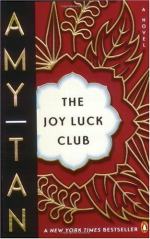|
This section contains 2,893 words (approx. 10 pages at 300 words per page) |

|
SOURCE: “Self and Identity among Aging Immigrants in The Joy Luck Club,” in Journal of Aging and Identity, Vol. 3, No. 2, June, 1998, pp. 59–66.
In the following essay, Delucchi seeks to demonstrate how literature's “fictionalized life histories” contribute to social science by reading The Joy Luck Club as an account of aging and identity formation.
This article uses George Herbert Mead's theory of symbolic interaction to examine self and identity among aging immigrants in Amy Tan's novel The Joy Luck Club (1989). Social scientists have largely bypassed analysis of fictional accounts of the Asian diaspora. My motivation for employing Mead's theory is to extend social scientific analysis to novels on aging and ethnicity. By examining self-narratives in fictional representations of the aging immigrant experience, I assess how identity develops out of particular social conditions and is achieved through social, psychological processes. Despite some limitations, symbolic interaction offers insights into the process...
|
This section contains 2,893 words (approx. 10 pages at 300 words per page) |

|


